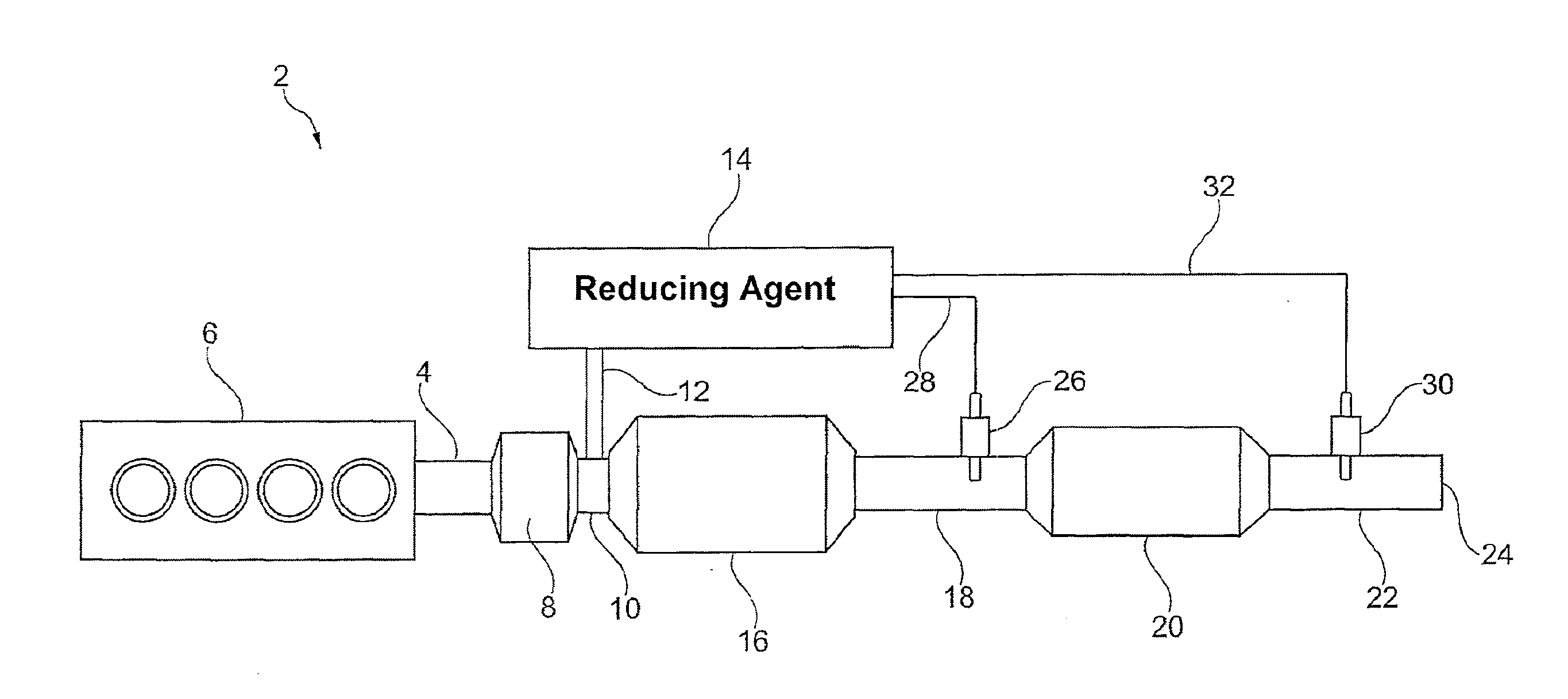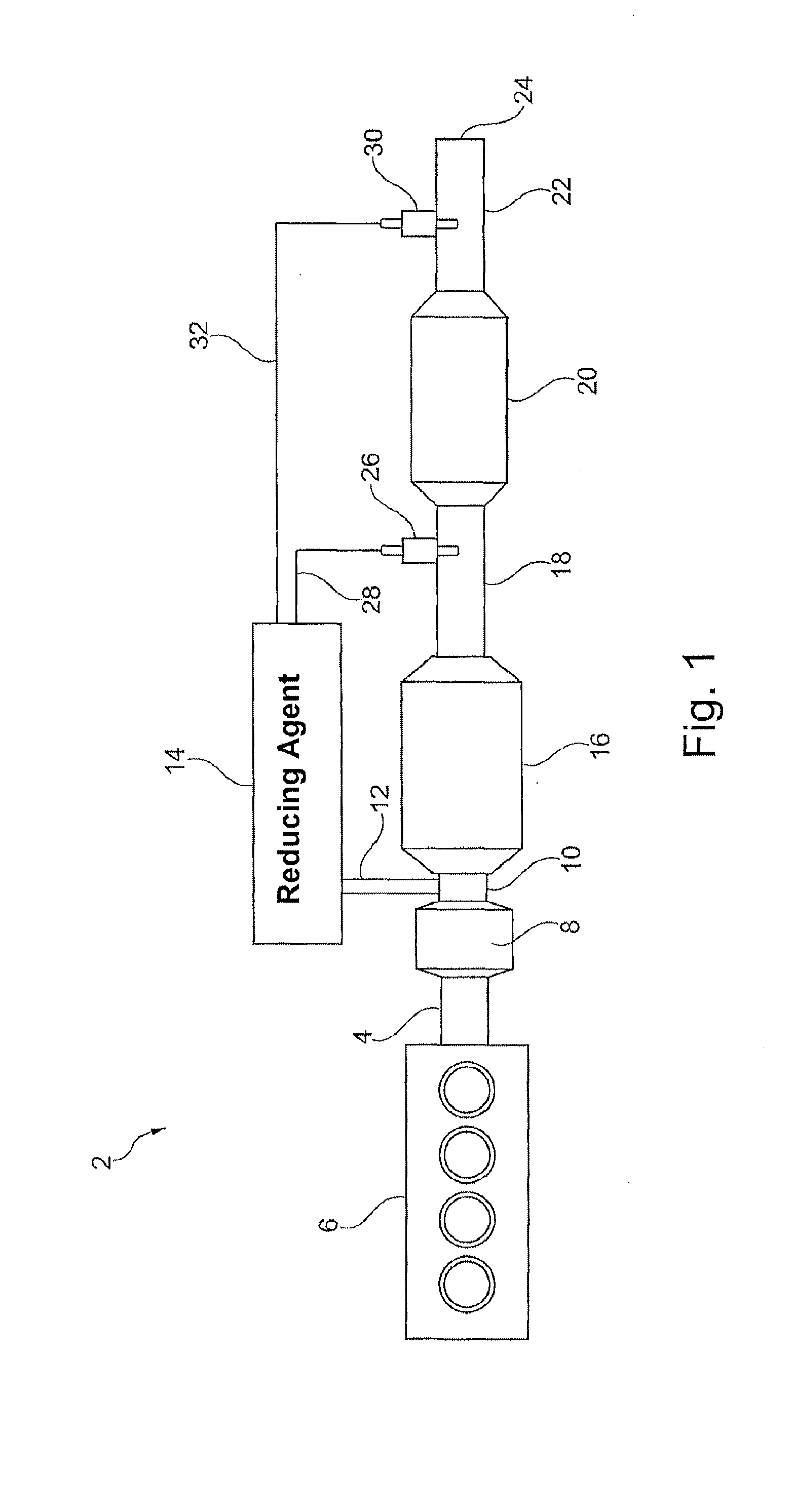Sensor for Detecting the Amount of a Reducing Agent and the Amount of a Pollutant in an Exhaust Gas
- Summary
- Abstract
- Description
- Claims
- Application Information
AI Technical Summary
Benefits of technology
Problems solved by technology
Method used
Image
Examples
Example
DETAILED DESCRIPTION OF THE DRAWING
[0028]In FIG. 1, an embodiment of an exhaust gas aftertreatment system 2 is shown. The aftertreatment system 2 is suitable for minimizing the nitrogen oxide fraction in the engine exhaust gas 4 from an engine 6. The engine exhaust gas 4 is fed to a diesel oxidation catalyst 8, in which hydrocarbon compounds and carbon monoxide from the engine exhaust gas are afterburnt. The prepurified engine exhaust gas 10 from the diesel oxidation catalyst 8 is enriched with ammonia 12 from a dosing apparatus 14 to be described below, and is subjected to a selective catalytic reduction 16. In this case, nitrogen oxides in the prepurified engine gas 10 and the ammonia react with one another and convert to nitrogen and water. A diesel particulate filter 20 filters the remaining ammonia 12 from the thus purified engine exhaust gas 18 and emits the filtered exhaust gas 22 to the atmosphere (ambient air) 24.
[0029]According to one embodiment of the invention, a first n...
PUM
 Login to View More
Login to View More Abstract
Description
Claims
Application Information
 Login to View More
Login to View More - R&D
- Intellectual Property
- Life Sciences
- Materials
- Tech Scout
- Unparalleled Data Quality
- Higher Quality Content
- 60% Fewer Hallucinations
Browse by: Latest US Patents, China's latest patents, Technical Efficacy Thesaurus, Application Domain, Technology Topic, Popular Technical Reports.
© 2025 PatSnap. All rights reserved.Legal|Privacy policy|Modern Slavery Act Transparency Statement|Sitemap|About US| Contact US: help@patsnap.com


